– Samalla he haluavat edistää hiirimallin käyttöä, koska se edistää heidän omaa rahoitusta ja tutkimusta. Se on tällaisen yhden tieteellisen segmentin selänrapsutuskerho.
Miksi hiirimalli sitten vertautuu niin huonosti ihmiseen?
– Hiiri elää kaksi vuotta ja kehittää sinä aikana massiiviset amyloidiplakit. Alzheimer-potilas elää keskimäärin 80 vuotta, ja sinä aikana kehittyy jonkin verran amyloidiplakkeja, mutta paljon muutakin patologiaa, mikä hiirestä puuttuu.
Lue lisää: Science: Valtava määrä Alzheimer-tutkimusta saattaa perustua vääristeltyihin tuloksiin
Lesnén vuoden 2006 tutkimusta koskevat väärennössyytökset liittyvät tutkimuksessa esitettyihin kuviin. Tienari arvioi, että tutkimusta tehtäessä tulokset eivät ole näyttä-neet tarpeeksi hyviltä, joten tuloksia on kaunisteltu. Ilmiötä hän kuvailee tieteelliseksi opportunismiksi.
Jos väärennös tai kuvamanipulaatio on tapahtunut, on se Tienarin mielestä raskauttavaa.
– Hänen tutkijanuransa on oltava loppu. Jos valehtelet kerran, niin se on slut på den.
Tutkimuksen Lesnén kanssa tehnyt neurologi Karen Ashe sanoi NBC Newsille toivo-vansa, että tutkimus vedettäisiin pois kokonaisuudessaan. Hän oli Tienarin tapaan sitä mieltä, ettei mahdollinen väärennös kyseenalaistaisi beeta-amyloidia koskevaa hypoteesia.
– On musertavaa kuulla, että kollegani olisi saattanut johtaa minua ja tiedeyhteisöä harhaan, Ashe kommentoi. "
HM:Ashe sattuu kyllä olemaan se,joka teki Lesnén väärennetystä nollatutkimuksesta kuuluisan raporoimalla, että "eräs hiireen muuntogeenisesti ympätty beta-amyloidi huonontaa senmuistia". Mää epäoilen että on enemmän sellaisia hiireen tai vaikka ihmiseen muuntogeenisesti ympättyjä kemikaaleja, kuin sellaisia, jotka eivät huononna...
PS: KOSKA muuten PEILINEURONIPUOSKAREILLE "se on slut på den"?!
***
Wanhaa keskustelua:
https://www.theguardian.com/uk/2004/jun/25/health.research
"Alzheimer's drugs a waste of money, says NHS study
Alzheimer's drugs waste of cash, says NHS study
Fri 25 Jun 2004 13.46 BST
"Sadly, there are a lot of people with dementia and far too little money available to look after them," he said. "Doctors and healthcare funders need to question whether it would be better to invest in more doctors and nurses and better social support rather than spending huge sums of money prescribing these expensive drugs."
There is no cure for Alzheimer's and the drugs are the only existing treatment, which is why they have become an emotive issue among carers. There was an angry reaction from the drug companies who have pushed for the drugs to be prescribed everywhere since the National Institute for Clinical Excellence (Nice) approved them for use in the NHS in January 2001.
There are 39000 people in the UK on the drugs,which cost £1000 a year per patient. Eisai and Pfizer UK ,who manufacture and distribute donepezil, known more com-monly by the brand name Aricept, claimed there was "an overwhelming body of evidence" that the drugs helped people with dementia.
The drug companies' statement went out in the name of the Alzheimer's Society as well, but the patient group, which has campaigned hard for the drugs, later said that was a mistake and issued its own. The society received £68,258 from drug compa-nies in the past two financial years, but said this was a small part of a total income of £27m.
In its statement, the society said it "would be concerned if the findings were to further restrict access to drug treatments that we know can delay the symptoms of Alzhei-mer's disease". Evidence from people with dementia and their carers had shown that the drugs slowed the progress of the disease, it said. But Professor Gray's rando-mised trial, published in the Lancet medical journal, shows the drugs help patients to a higher score in memory tests, but not to cope any better with their lives.
Patients taking the drugs were able to name 11 different fruits in a minute instead of 10. but were not able to stay in their own homes or care for themselves any longer than those without the drugs.
In the original trials to get the drugs a licence, said Prof Gray, "the real questions haven't been asked - whether patients can walk home and don't undress themselves in the street.
"The Alzheimer's Society is lobbying very vigorously for access to these drugs. They would be better off lobbying for more social support for patients. There has been a debate recently as to whether some of the patient groups should be accepting money from the pharmaceutical companies.
"They [the society] have been asking for people with a good experience with the choline-sterase inhibitors (the class of drugs to which donepezil/Aricept belongs) to write in and they will submit it to Nice. There has been far too much reliance on anecdotal evidence of people getting better on the drugs."
The study,called AD2000,recruited 565 Alzheimer's sufferers living in the community, who were randomly assigned to receive either donepezil or a placebo.
The researchers found there was a low-level improvement in mental and functional ability in the tests, but that there was no difference in the length of time before pa-tients were institutionalised or in the progress of their disability. The drugs made no difference to the costs of their care, the time unpaid carers had to spend with them, nor to the timing of deaths. Nice is updating its advice on Alzheimer's drugs, and will be taking the study into account.
Battle was immediately joined by a consultant in old age psychiatry from Swindon, Roger Bullock, who said the study was flawed in its design and execution.
The study was originally intended to recruit 3,000 people. It ended up with only 565 "primarily because many of the clinicians forced to participate in it by draconian pub-lic health policy in the Midlands did not believe in what they were being asked to do", he alleged.
The respected Drug and Therapeutics Bulletin assessed donepezil in 1997 and again in 1998 and concluded that there was no evidence that it improved patients' or carers' lives.
Jo Collier, professor of medicines policy at St George's school of medicine in London and editor of the DTB, said surveys by the drug companies have shown that many doctors have not been prescribing the drugs. "Prescribers clearly were unhappy with the product and have voted with their feet. It is now time for Nice to urgently review its advice," he said.
Alzheimer's
http://keskustelu.skepsis.fi/Message/FlatMessageIndex/145065?page=1#145820
RK
04.07.2004 01:24:25
145065
The Guadian: Alzheimerin taudin lääkkeet ovat huijausta!
Sattuipa silmääni meikäläisenä Juhannusaattona 25.06 maailmalla konferenssimat-kaillessani teknis-tieteellisissä asioissa Manchesterin lentokentän lehtilööpistä The Guardianin etusivun juttu
"Alzheimer´s drugs waste of money, says NHS study."
NHS on National Health Service
http://www.nhs.uk/
Englannin edellisenä iltana kohtaaman ratkaisutappion Portugalille lisäksi ei "Kaarti-laisen" etusivullemuuta mahtunutkaan kuin tämä, sivun levyinen juttu. Eikä kyseessä ole "sensaatiolehti".
Jutun mukaan lääkeillä, jotka maksavat Britanniassa vuodessa £ 39 mlj., ei ole ha-vaittavaa vaikutusta potilaiden toimintakykyyn eikä myöskään taudin etenemiseen.
Lääkityt potilaat muistavat verrokkeja hiukan paremmin erilaisia sanallisia pulinoita (kuten neurologiset potilaat useinkin, vaikka toimintakyky olisi nolla), mutta taudin etenemiseen lääkkeellä ei ole vaikutusta.Aiemmat tutkimukset ovat alan teollisuuden maksamia. The Guardian ei kuitenkaan kerro,missä ne on teetetty, eikä siinä mainita alan suomalaisten tutkimusryhmien tai tutkijoiden (joita olivat mm. Riekkinen ja Urpo Rinne, ellen aivan väärin muista,ja heidän piti olla "maailman eturivissä", ja saamien-sa maksujen perusteella varmaan tienaajina olivatkin...) Lääkkeet oli hyväksynyt käyttöön National Institute of Clinical Excellence (Nice) tammikussa 2001. Muuta hoitoa Alzheimerin tautiin ei varsinaisesti ole.
"Tutkijat" olivat itse sompuloineet mieleisensä "vaikutustestit", joissa nimenomaan mitattiin asioita joihin troppijotenkin omaa vaikutusta, siitä riippumatta oliko sollä vaikutuksella potilaiden HYVINVOINNIN kannalta mitään todellista merkitystä. Testit eivät mitanneet esimerkiksi omatoimisuutta eivätkä vaikutusta elinikään.
Lääkeaineista mainitaan "donepezil" ja sen valmistajista Eisai ja Pfizer,joilla oli olevi- naan "vakuuttava näyttö" aineidensa dementiaa ehkäisevästä vaikutuksesta. Potilai-ta on Britanniassa 39000, ja troppikulut siis £ 1000 per potilas per vuosi (tiedä sitten ovatko paremmin esimerkiksi hiljaa...)
Troppia kannatti aikaisemmin myös potilasten (omaisten) yhdistys, mutta he olivat pian itsekin kääntyneet tutkimuksia epäilevälle kannalle, ja teettäneet omia teolisuu-desta riippumattomia tutkimuksiaan,jotka vahvistivat epäilyksiä.Tutkittavaksi jäi myös oliko teollisuus vilpillisesti rahoittanut potilasyhdistyksiä ottamaan kantaa ko.troppien puolesta. Lääkkeiden puolesta mainittiin olleen (ilmeiseti organisoitua) "juttutukea" (anecdotal evodence) tietellisen näytön "tueksi". Nice aikoo muutta heti ohjeitaan Alzheimerin taudin lääkkeiden käytöstä.
Suomessa kukaan ei tainnut panna niitä korkean BISNEStason tutkimusten TULOK-SIA kyseenalaiseksi, vaikka väärinkäytöksiä havaittiinkin. Ja yliopistothan kiukutteli-vat siitä,että ne puoskarirahat eivät olleet lyhentämättömänä tulleet YLIOPISTO kas- saan,jos olisivat menneet, nii olisiko vieläkään huomattu mitään mätää itse tutkimuk- seissa! tiede ja bisnes eivät sovellu uolla tavalla yhdistettäviksi, sopivasta humpuu-kista maksetaan aina parhaiten,eikä objektiivisesta tiedosta,mistäpäin maailmaa nuo brittien humppuukitutkimukset sitten olivatkin peräisin. Sen sijaan objektiivinen tieto kyllä aina maksaa joskus itsensä takaisin, jos ei muuten niin humpuukitutkimusten ja väärinkäytösten torjumisena.
Mahtaakohan kukaan tietää tarkemmin,oliko noilla aineilla tai firmoilla mitään kytken- tää näihin tunnetuihin valitettaviin tapauksiin Suomen tiede(ja "tiede")elämässä?
RK
tpi
04.07.2004 01:24:34
145074
Re: The Guadian: Alzheimerin taudin lääkkeet ovat huijausta!
RK kirjoitti 04.07.2004 (145065)...
>Sattuipa silmääni meikäläisenä Juhannusaattona 25.06 maailmalla >konferenssimatkaillessani teknistieteellisissä asioissa Manchesterin lentokentän >lehtilööpistä The Guardianin etusivun juttu
>"Alzheimer´s drugs waste ofmoney, says NHS study."
>NHS on National Health Service
>http://www.nhs.uk/
Enpä löytänyt mitään nhs:n sivuilta nopealla etsimisellä. Toisaalta itsellä on melkoi-sesti kokemusta Alzheimerin taudin hoidosta kyseisillä lääkkeillä. Mielestäni vaikutus on aika selkeä useinkin jo ihan käytännössä. Kaikilla lääkkeet eivät auta, mutta suu-rella osalla potilailla vaikutus on ihan selvä arvioituna sekä omaisten arvion mukaan, muistitestillä mitattuna sekä myös oman (luonnollisesti kuitenkin melko lyhyen) vastaanottotilanteessa käyttäytymisen arvioimisen perusteella. Lisäksi tilanne on uudelleen heikentynyt jos lääkitys on jostain syystä lopetettu. Tutkimuksia on myös olemassa varsin paljon, ja kaikki ovat olleet hyvin samannsuuntaisia tuloksiltaan.
Hannu.Lauerma
04.07.2004 01:24:36
145076
Alzheimerin taudin lääkkeet
RK kirjoitti 04.07.2004 (145065)...
>"Alzheimer´s drugs waste ofmoney, says NHS study."
>Jutun mukaan lääkeillä, jotka maksavat britanniassa vuodessa £ 39 mlj., ei ole >havaittavaa vaikutusta potilaiden toimintakykyyn eikä myöskään taudin >etenemiseen. Lääkityt potilaat muistavat verrokkeja hiukan paremmin erilaisia >sanallisia pulinoita (kuten neurologiset potilaat useinkin, vaikka toimintakyky olisi >nolla), mutta taudin etenemiseen lääkkeellä ei ole vaikutusta.
Saa nähdä mitä tämä tutkimus poikii, mutta taitaa olla ennenaikaista intoutua kovin laajoihin johtopäätöksiin. Itse hoidan niin harvoin vanhuspotilaita, että kokemukseni on riittämätön vakuuttaviin kannanottoihin. Olen kuitenkin nähnyt myös hyvin vaikut-tavia lääkevasteita näillä tropeilla, sellaisia joissa potilas, omaiset ja lääkäri näkevät ja kokevat saman muutoksen, sen jälkeen kun muista lääkkeistä on ollut enemmänkin haittaa tai ne ovat olleet tehottomia.
Eräs mahdollisuus on se, että lääkkeet auttavat käytännön kannalta merkittävästi vain pientä osaa potilaista, jolloin valikoiduilla ja tarkoin tutkituilla dementiapotilailla tehdyt tutkimukset eivät ole yleistettävissä siihen suureen dementikkojen joukkoon, jota innon ja toivon puuskassa aletaan "kentällä" hoitaa.
Kokonaistaloudellisuuden ja toimivuuden arviointi on vaikeaa. Vältetäänkö laitoshoi-toa vai pitkitetäänkö vain dementiaan liittyvää kärsimystä? Onko dementiapotilaan iän pitkittäminen mielekäs tavoite, kuten NHS-sitaatissa annettiin ymmärtää?
>Aiemmat tutkimukset ovat alan teollisuuden maksamia. The Guardian ei kuitenkaan >kerro, missä ne on teetetty,eikä siinä mainita alan suomalaisten tutkimusryhmien tai >tutkijoiden (joita olivat mm. Riekkinen ja Urpo Rinne, ellen aivan väärin muista, ja >heidän piti olla "maailman eturivissä", ja saamiensa maksujen perusteella varmaan >tienaajina olivatkin...)
Rinne oli hyvin leimallisesti Parkinsonin taudin tutkija, Riekkinen enemmän mukana Alzheimerin taudin tutkimuksessa. Heidän raportoimiensa tulosten on väitetty tulleen poissuljetuiksi kokonaisdatasta jonka valossa asioita tarkastellaan, mutta tämä on vain kuulopuhetta enkä ole perillä yksityiskohdista.
>"Tutkijat" olivat itse sompuloineet mieleisensä "vaikutustestit", joissa nimenomaan >mitattiin asioita joihin troppijotenkin omaa vaikutusta, siitä riippumatta oliko sillä >vaikutuksella potilaiden HYVINVOINNIN kannalta mitään todellista merkitystä. >Testit eivät mitanneet esimerkiksi omatoimisuutta eivätkä vaikutusta elinikään.
Tällainen asetelma lienee aikanaan esiintynyt myös eräissä teollisuusvetoisissa ma-sennuslääketutkimuksissa, luodaan asteikkoja jotka kuvaavat erityisesti lääkevaiku-tusta. Monipuolisempia mitta-asteikkoja ruvettiinkin vaatimaan kun asiaan kiinnitettiin huomiota.
>Lääkeaineista mainitaan "donepezil" ja sen valmistajista Eisai ja Pfizer, joilla oli >olevinaan "vakuuttava näyttö" aineidensa dementiaa ehkäisevästä vaikutuksesta. >Potilaita on Britanniassa 39000, ja troppikulut siis £ 1000 per potilas per vuosi >(tiedä sitten ovatko paremmin esimerkiksi hiljaa...)
Mitään hiljentäviä aineita nämä eivät ole, pikemmin varovasti aktivoivat. Toisaalta mm. näköharhat vähenevät joskus todella hyvin.
>Tutkittavaksi jäi myös oliko teollisuus vilpillisesti rahoittanut potilasyhdistyksiä >ottamaan kantaa ko. troppien puolesta. Lääkkeiden puolesta mainittiin olleen >(ilmeisesti organisoitua) "juttutukea" (anecdotal evidence) tieteellisen näytön >"tueksi".
Käsittääkseni tällaista potilas- ja omaisjärjestöjen kautta tapahtuvaa vaikuttamista on tapahtunut joissain maissa. Viranomaisvalvonnan taso vaihtelee. USA:ssa lääketeol- lisuus on ollut syytettyjen penkillä monenlaisista manipuloinneista, ja valvontaa on tiukennettu mm. kongressien mainonta- ja edustuskulujen osalta.
Niinhän se on, että entistä parempia lääkkeitä on pystynyt kehittämään vain voittoon tähtäävä teollisuus, mutta lääketieteen tutkijoiden tulisi olla kaikin puolin irrallaan markkinointi-intresseistä. Alaa sentään valvotaan, kuten tämä NHS-juttu osoittaa, ja epäilyttävät havainnot raportoidaan kansainvälisesti.
Leena
04.07.2004 01:24:40
145080
Alzheimer, optimismi ja hoitaminen ´kentällä´
Hannu.Lauerma kirjoitti 04.07.2004 (145076)...
>jota innon ja toivon puuskassa aletaan "kentällä" hoitaa.
Määrittelyn ´kenttä´.
Innon ja toivon puuskista lienee käsiteellisesti sairauteen melko vaikea puhua kun silloin, liittyvä keskeinen oire on sairaudentunnon puuttuminen. Tästä seuraa, että hoitoon ei hakeuduta, vaan yritetään pärjätä yhä hankalammaksi käyvien oireiden kanssa normaalisti työpaikoilla ja muissa yhteyksissä.
Siinä vaiheessa, kun sairaudentuntoa sitten on ehtinyt riittävästi kehittyä, yleensä jo muukin ympäristö on ehtinyt kiinnittää huomiota johonkin.
Eli kyse ei tässä vaiheessa enää ole normaalistavasta vuoroisesta kanssakäymi-sestä - kotona, tai työpaikalla, vaan todellakin jonkin asteisesta puolipakollisesta ´hoitamisesta´, oli optimismia tahi ei.
Ja lisättäköön tähän todellakin vielä se, jo u s e a a n kertaan muissa yhteyksissä ´ tehty toteamus, että ´ihmisillä on hyvin erilaiset kyvyt osata toimia ns. oikein´.
Jyrki.Wigelius
05.07.2004 01:24:50
145090
Re: The Guadian: Alzheimerin taudin lääkkeet ovat huijausta!
tpi kirjoitti 04.07.2004 (145074)...
>Enpä löytänyt mitään nhs:n sivuiltanopealla etsimisellä. Toisaalta itsellä on >melkoisesta kokemusta Alzheimerin taudin hoidostakyseisillä lääkkeillä. Mielestäni >vaikutus on aika selkeä useinkin jo ihan käytännössä. Kaikilla lääkkeet eivät auta, >mutta suurella osalla potilailla vaikutus on ihan selvä arvioituna sekä omaisten >arvion mukaan, muistitestillä mitattuna sekä myös oman (luonnollisesti kuitenkin >melko lyhyen) vastaanottotilanteessa käyttäytymisen arvioimisen perusteella. >Lisäksi tilanne on uudelleen heikentynyt jos lääkitys on jostain syystä lopetettu. >Tutkimuksia on myös olemassa varsin paljon, ja kaikki ovat olleet hyvin >samansuuntaisia tuloksiltaan.
Mihinkäs se vaihtoehtohoitojen yhteydessä usein esiinvedetty plasebovaikutus nyt unohtui? Kuten jo aikaisemmin toin esiin keskustelussani akupunktuurista Hannu Lauerman kanssa, ei lääketieteellisetkään hoitokäytännöt läheskään aina perustu kiistattomaan näyttöön ja jos perustuvat eivät nekään ole immuuneja esim. julkaisuharhalle tai jopa suoralle huijaukselle.
Lääketieteellistenkin hoitojen vaikutukset saattavat selittyä ns. lumevaikutuksella. Niissä jos jossain potilaalla on usein voimakkaat odotukset ja usko tehoon. Ottakaa opiksenne, olkaa skeptisiä myös koululääketiedettä kohtaan.
Hannu.Lauerma
05.07.2004 01:24:52
145092
Re: Alzheimer, optimismi ja hoitaminen ´kentällä´
Leena kirjoitti 04.07.2004 (145080)...
>Hannu.Lauerma kirjoitti 04.07.2004 (145076)...
>>jota innon ja toivon puuskassa aletaan "kentällä" hoitaa.
>Määrittele ´kenttä´.
Ne tieteellisen tutkimuksen ulkopuolella olevat ihmiset, joiden dementiaa päädytään syystä tai toisesta hoitamaan, myös heidän hoitajansa.
>Innon ja toivon puuskista lienee käsiteellisesti melko vaikea puhua silloin, kun >sairauteen liittyvä keskeinen oire on sairaudentunnon puuttuminen. Tästä seuraa, >että hoitoon ei hakeuduta, vaan yritetään pärjätä yhä hankalammaksi käyvien >oireiden kanssa normaalisti työpaikoilla ja muissa yhteyksissä.
Alkavaan dementiaan liittyy tiedon saatavuuden seurauksena sentään joskus nimen-omainen halu tulla tutkituksi ja hoidetuksi. Vaikeiden ja yksilönvapautta rajoittavien hoitopäätösten tekijät ja omaiset ynnä tehokasta hoitokeinoa vailla olevat lääkärit taas voivat saada innostuksen puuskia silloin kun lupauksia tehokkaasta lääkitykses- tä esitetään. Enemmän tai vähemmän painavin perustein, mikä oli alkuperäinen kysymys.
Hannu.Lauerma
05.07.2004 01:24:53
145093
Re: The Guadian: Alzheimerin taudin lääkkeet ovat huijausta!
Jyrki.Wigelius kirjoitti 05.07.2004 (145090)...
>Mihinkäs se vaihtoehtohoitojen yhteydessä usein esiinvedetty plasebovaikutus nyt >unohtui? Kuten jo aikaisemmin toin esiin keskustelussani akupunktuurista Hannu >Lauerman kanssa, ei lääketieteellisetkään hoitokäytännöt läheskään aina perustu >kiistattomaan näyttöön ja jos perustuvat eivät nekään ole immuuneja esim. >julkaisuharhalle tai jopa suoralle huijaukselle. Lääketieteellistenkin hoitojen >vaikutukset saattavat selittyä ns. lumevaikutuksella. Niissä jos jossain potilaalla on >usein voimakkaat odotukset ja usko tehoon. Ottakaa opiksenne, olkaa skeptisiä >myös koululääketiedettä kohtaan.
"Koululääketieteestä" en tiedä, mutta lääketieteen ensimmäinen periaate on itsekriit-tisyys, ja puheena olevien lääkkeiden tässä kyseenalaistettu näyttö nojaa kaksois-sokkotutkimukselle.Huijaus on mahdollinen selitys mutta teollisuuden kannalta lyhyt- näköinen riskisijoitus, tutkimusten yleistettävyyden puute ehkä tyypillisin virhelähde.
Hoitojen tehon arvioinneissa tutkimusnäyttö ratkaisee aluksi, mutta kliinisten ammat-tilaisten huomaama ero valmistajan raportoimien tutkimusnäyttöjen ja käytännön välillä on aina huolenaihe. Eroja voi ilmetä useista syistä.
Leena
05.07.2004 01:24:56
145096
Re: Alzheimer, optimismi ja hoitaminen ´kentällä´
Hannu.Lauerma kirjoitti 05.07.2004 (145092)...
>Leena kirjoitti 04.07.2004 (145080)...
>>Hannu.Lauerma kirjoitti 04.07.2004 (145076)...
>>>jota innon ja toivon puuskassa aletaan "kentällä" hoitaa.
>>Määrittele ´kenttä´.
>Ne tieteellisen tutkimuksen ulkopuolella olevat ihmiset, joiden dementiaa >päädytään syystä tai toisesta hoitamaan, myös heidän hoitajansa.
Ahaa, minun virheeni siis. Ajattelin, että käyttämäsi käsite ´kenttä´ saattaisi viitata johonkin konkreettisesti olemassa olevaan paikkaankuten esimerkiksi työpaikkaan, perheeseen, harrastuspiiriin jne.
Siis paikkaan, jossa luontaisesti jonkin verran toisistaan eroavat ihmiset ovat tekemisissä toisten ihmisten kanssa ja joissa syntyy kaikenlaisia tilanteita, joita sitten yhdessä yritetään selvitellä. '
Siis selvitellä luomalla nimenomaan käsitteitä ja malleja, joiden avulla ilmiötä olisi mahdollista nimenomaan ymmärtää tarkemmin, jolloin siitä aiheutuvat hankaluudet melko todennäköisesti vähenevät.
RK
05.07.2004 01:25:42
145142
Re: The Guadian: Alzheimerin taudin lääkkeet ovat huijausta!
tpi kirjoitti 04.07.2004 (145074)...
>RK kirjoitti 04.07.2004 (145065)...
>>Sattuipa silmääni meikäläisenä Juhannusaattona 25.06 maailmalla >>konferenssimatkaillessani teknis-tieteellisissä asioissa Manchesterin lentokentän >>lehtilööpistä The Guardianin etusivun juttu
>>"Alzheimer´s drugs waste of money, says NHS study."
>>NHS on National Health Service
>>http://www.nhs.uk/
>Enpä löytänyt mitään nhs:n sivuilta nopealla etsimisellä.
Tutkimuksen johtaja (lead researcher) on ollut "Birmingham University`s Clical Trials Unit":in johtaja Roger Gray.
>Toisaalta itsellä on melkoisesti kokemusta Alzheimerin taudin hoidosta kyseisillä >lääkkeillä. Mielestäni vaikutus on aika selkeä useinkin jo ihan käytännössä. Kaikilla >lääkkeet eivät auta,mutta suurella osalla potilailla vaikutus on ihan selvä arvioituna >sekä omaisten arvion mukaan, muistitestillä mitattuna sekä myös oman >(luonnollisesti kuitenkin melko lyhyen) vastaanottotilanteessa käyttäytymisen >arvioimisen perusteella.
Nämä ovat ne samat menetelmät, joita alkuperäiset tutkijat ovat käyttäneet, ja jotka tarkistustutkimus katsoo riittämättömiksi, erityisestijuuri tuo muistitesti (jonka ei tarvit-se lainkaan mitata aktuaalista toimivaa muistia,vaan erilaista automatisoitunutta puli- naa kuten vanhoja lauluja sattaa tulla virheettömästi potilailta (esimerkiksi aivoinfark- ti-), joilla varsinaista toimivaa muistia tai ajatelua ei todellisuudessa ole. Siinä edelli-nen sana palauttaa mieleen seuraavan, tai "omena" palauttaa mieleen myös "pääry-nän", eikä tuollaisen ilmiön pienempi tai suurempi aktiivisuus kerro mitään todellista taudin kehtyksestä: sellaista saataisiin varmaan aktivoitua viinalla tai LSD:lläkin, eikä se tarkoita, että potilaan tilanne niitä käyttäessään olisi "parempi" kuin ilman niitä.
>Lisäksi tilanne on uudelleen heikentynyt jos lääkitys on jostain syystä lopetettu. >Tutkimuksia on myös olemassa varsin paljon, ja kaikki ovat olleet hyvin >samansuuntaisia tuloksiltaan.
Tässä on otettava huomioonmyös placebo-vaikutus. Ja se vaikuttaa paitsi potilaisiin myös subjektiivisiin havainnoitsijoihin, jos nämä eivät systematisoi havaintojaan mittauksin.
Pitää verrata, vaikuttaako myös "lääkkeen" vaihtaminen joihinkin muuten samanlaisiin mutta tehoaineista vapaisiin "millipillerihin" tilannetta heikentävästi.
Ja edelleen, miten sitten vaikuttaa näiden "millipillereiden" (nimitys Speden samannimisestä mainiosta elokuvasta) lopettaminen.
RK
RK
05.07.2004 01:25:44
145144
Re: Alzheimerin taudin lääkkeet
Hannu.Lauerma kirjoitti 04.07.2004 (145076)...
>RK kirjoitti 04.07.2004 (145065)...
>>"Alzheimer´s drugs waste of money, says NHS study."
>>Jutun mukaan lääkeillä, jotka maksavat Britanniassa vuodessa £ 39 mlj., ei ole >>havaittavaa vaikutusta potilaiden toimintakykyyn eikä myöskään taudin >>etenemiseen. Lääkityt potilaat muistavat verrokkeja hiukan paremmin erilaisia >>sanallisia pulinoita (kuten neurologiset potilaat useinkin, vaikka toimintakyky olisi >>nolla), mutta taudin etenemiseen lääkkeellä ei ole vaikutusta.
>Saa nähdä mitä tämä tutkimus poikii, mutta taitaa olla ennenaikaista intoutua kovin >laajoihin johtopäätöksiin. Itse hoidan niin harvoin vanhuspotilaita, että kokemukseni >on riittämätön vakuuttaviin kannanottoihin. Olen kuitenkin nähnyt myös hyvin >vaikuttavia lääkevasteita näillä tropeilla,sellaisia joissa potilas, omaiset ja lääkäri >näkevät ja kokevat saman muutoksen, sen jälkeen kun muista lääkkeistä on ollut >enemmänkin haittaa tai ne ovat olleet tehottomia.
Minulla on tämä The Guardian June 25 2004 tässä kädessäni, pistin varmuuden vuoksi talteen.
Tutkimuksen johtaja oli siis johtaja Roger Gray, Clinical trials unit, Birmingham University.
Lehti toteaa: "There is no cure for Alzheimer´s and the drugs are the only exixting treatment, which is why they have become an emotive issue amog carer´s".
Tästä minä päätelin, että jos on yksi ainoa troppi, niin sen täytyisi sitten olla sitä samaa mitä Paavo Riekkisenkin porukka tutki.
Onko varmaa, että samaa "paranemista" ei sataisi aikaan vaikka viinalla tai LSD:llä, joita käyttettäessä potilaan tilanne tuskin kuitenka todellisuudessa paranee?
>Eräs mahdollisuus on se, että lääkkeet auttavat käytännön kannalta merkittävästi >vain pientä osaa potilaista, jolloin valikoiduilla ja tarkoin tutkituilla dementiapotilailla >tehdyt tutkimukset eivät ole yleistettävissä siihen suureen dementikkojen joukkoon, >jota innon ja toivon puuskassa aletaan "kentällä" hoitaa.
Professori Grayn mukaan vika oli "sopivissa" testeissä: "But Professor Grays rando-mized trial, published in the Lancet medical journal, shows the drugs help patients to a higher score in memory tests, but not to cope any better in their lives. Patients ta-king tahe drugs were able to name 11 different fruits instead of 10, but were not able to stay in their homes or care themselves any longer than those without the drugs."
Gray neuvoo sijoittamaan ko. troppiin pistetyt rahat tavallisen sairaanhoidon parantamiseen.
>Kokonaistaloudellisuuden ja toimivuuden arviointi on vaikeaa. Vältetäänkö >laitoshoitoa
ilmeisesti se on tarkoitus
>vai pitkitetäänkö vain dementiaan liittyvää kärsimystä?
Se on tietysti hyvin kyseenalainen päämäärä. Siitä ei ymmärtääkseni ollut kysymys kummassakaan leirissä.
>Onko dementiapotilaan iän pitkittäminen mielekäs tavoite, kuten NHS-sitaatissa >annettiin ymmärtää?
Ei tietenkään _minkälaisen tahansa_ iän...
>>Aiemmat tutkimukset ovat alan teollisuuden maksamia. The Guardian ei >>kuitenkaan kerro, missä ne on teetetty, eikä siinä mainita alan suomalaisten >>tutkimusryhmien tai tutkijoiden (joita olivat mm. Riekkinen ja Urpo Rinne, ellen >>aivan väärin muista, ja heidän piti olla "maailman eturivissä", ja saamiensa >>maksujen perusteella varmaan tienaajina olivatkin...)
>Rinne oli hyvin leimallisesti Parkinsonin taudin tutkija, Riekkinen enemmän mukana >Alzheimerin taudin tutkimuksessa. Heidän raportoimiensa tulosten on väitetty >tulleen poissuljetuiksi kokonaisdatasta jonka valossa asioita tarkastellaan, mutta >tämä on vain kuulopuhetta enkä ole >perillä yksityiskohdista.
Ettei olisi niin, jos kerran on vain yksi spesiaalilääke, että noiden riekisten tutkimus-ten poistaminen kokonaisdatasta olisi ollut yksi noiden tarkistustutkimusten syy?
Eikö mistään ole saatavissa tietoja, mitä nimeomaisia aineita Riekkisten ryhmä tutki?
Tämä on tiedepoliittisesti erittäin tärkeä seikka, tuollaisten soveltavien tutkimusten alta on kaikena aikaa jyrätty EU:n tiedepolitiikalla perstutkimusta matalaksi, ja rahat ovat pyörineet noissa soveltavissa bisnestyyppisissä tutkimuksissa (eikä pelkästään lääketieteiden alalla).
>>"Tutkijat" olivat itse sompuloineet mieleisensä "vaikutustestit",joissa nimenomaan >>mitattiin asioita joihin troppi jotenkin omaa vaikutusta, siitä riippumatta oliko sillä >>vaikutuksella potilaiden HYVINVOINNIN kannalta mitään todellista merkitystä. >>Testit eivät mitanneet esimerkiksi >>omatoimisuutta eivätkä vaikutusta elinikään.
>Tällainen asetelma lienee aikanaan esiintynyt myös eräissä teollisuusvetoisissa >masennuslääketutkimuksissa, luodaan asteikkoja jotka kuvaavat erityisesti >lääkevaikutusta. Monipuolisempia mitta-asteikkoja ruvettiinkin vaatimaan kun >asiaan kiinnitettiin huomiota.
>>Lääkeaineista mainitaan "donepezil" ja sen valmistajista Eisai ja Pfizer, joilla oli >>olevinaan "vakuuttava näyttö" aineidensa dementiaa ehkäisevästä vaikutuksesta. >>Potilaita on Britanniassa 39000, ja troppikulut siis £1000 per potilas per vuosi >>(tiedä sitten ovatko paremmin >>esimerkiksi hiljaa...)
>Mitään hiljentäviä aineita nämä eivät ole, pikemmin varovasti aktivoivat. Toisaalta >mm. näköharhat vähenevät joskus todella hyvin.
>>Tutkittavaksi jäi myös oliko teollisuus vilpillisesti rahoittanut potilasyhdistyksiä >>ottamaan kantaa ko. troppien puolesta. Lääkkeiden puolesta mainittiin olleen >>(ilmeisesti organisoitua) "juttutukea" (anecdotal evidence) tietellisen näytön >>"tueksi".
>Käsittääkseni tällaista potilas- ja omaisjärjestöjen kautta tapahtuvaa vaikuttamista >on tapahtunut joissain maissa. Viranomaisvalvonnan taso vaihtelee. USA:ssa >lääketeollisuus on ollut syytettyjen penkillä monenlaisista manipuloinneista, ja >valvontaa on tiukennettu mm. kongressien mainonta- ja edustuskulujen osalta.
>Niinhän se on, että entistä parempia lääkkeitä on pystynyt kehittämään vain >voittoon tähtäävä teollisuus,
Tämä on luultavasti aika pitkälle näköharha sen suhteen,mikä toiminta on todellisuu- dessa tehokkainta titeen ja teknologia edistämistä: rumpua lyödään VAIN soveltavan tutkimuksen tuotekehityksen tuloksista, joista jälkimmäinen ei varsinaisesti tiede- yliopistojen toimenkuvaan edes kuulu,paitsi opetusmielessä. Perustutkimusta taas yksityisten ei kannata bisnemielessä tehdä,koska sen tulokset ovat kilpailijoillekin julkisia.
Toimiva perustukimusjärjestelmä on siis menetyksellisen bisneksen ULKOINEN EDELLYTYS (se mm. vaikutta radikaalisti siihen, millä asioilla firmat kilpailevat), se EI OLE SEN OSA, sitä ei voida tehdä "bisnesmenetelmällä".
Suomen perustutkimusjärjestelmä on tällä hetkellä epäkunnossa, se asia on kansallinen uhkatekijä numero yksi.
>mutta lääketieteen tutkijoiden tulisi olla kaikin puolin irrallaan markkinointi- >intresseistä. Alaa sentään valvotaan, kuten tämä NHS-juttu osoittaa, ja epäilyttävät >havainnot raportoidaan kansainvälisesti.
Tuotekehitystä valvotaan, perustutkimusjärjestelmää ei kukaan sen ulkopuolinen pysty yksityiskohtaisesti valvomaan,paitsi aivan karkeimmissa "kollegiumitauksissa" kun tutkittavana muka olevan alan perusteista ei olla ikinä kuultukaan hölähtävän pölähtävää PAIKKANSAPITÄVÄÄ, vaan pelkkää kilpailijoiden disiformaatiota (vaikka olisi maailman hienoimmat koneet käytettävissä...)
Perustutkimusjärjestelmä on kansainvälinen ja se kansainvälinen järjestelmä valvoo itse itseään, tietyin periattein kuitenkin, jotka ovat myös tavallisen kansalaisen opittavissa ja seurattavissa.
RK
Hannu.Lauerma
05.07.2004 01:25:45
145145
Lähteet tai perusteet väitteille?
RK kirjoitti 05.07.2004 (145142)...
>Nämä ovat ne samat menetelmät,joita alkuperäiset tutkijat ovat käyttäneet, ja jotka >tarkistustutkimus katsoo riittämättömiksi, erityisesti juuri tuo muistitesti (jonka ei >tarvitse lainkaan mitata aktuaalista toimivaa muistia, vaan erilaista >automatisoitunutta pulinaa kuten vanhoja lauluja sattaa tulla virheettömästi >potilailta (esimerkiksi aivoinfarkti-), joilla varsinaista toimivaa muistia tai ajatelua ei >todellisuudessa ole.Siinä edellinen sana palauttaa mieleen seuraavan, tai "omena" >palauttaa mieleen myös "päärynän", eikä tuollaisen ilmiön pienempi tai suurempi >aktiivisuus kerro mitään todellista taudin kehtyksestä: sellaista saataisiin varmaan >aktivoitua viinalla tai LSD:lläkin, eikä se tarkoita, että potilaan tilanne niitä >käyttäessään olisi "parempi" kuin ilman niitä.
Tämä kuulostaa tyyten uskomattomalta. Muistihäiriöiden tutkijat olisivat käyttäneet tyyten epärelevantteja testejä ja saaneet tuloksensa julkistetuiksi vertaisarvioiduissa tieteellisissä lehdissä? Tehneet jonkinlaisia alkeellisia pöljäntemppuja jotka kuka ta-hansa perusasiat tunteva heti tunnistaa,mutta vakuuttaneet sitten vieläpä valvontavi- ranomaisetkin, joita itseäänkin valvotaan todella tarkoin? Väite on sen verran raskas, että vaatii taakseen viitteitä.
Niitä Raunistulast olevan Koskisen muihin aiheisiin siirretyssä viestissä mainittuja ainutlaatuisen yksinkertaisia "maasutettuja" tai lahjottuja täytyisi kai olla monelle yhteiskunnan sektorille jyvitetty leegio. Ja jokaisen rehellisen täysijärkisen pitäisi suorastaan loistaa poissaolollaan, Raunistulassa.
>>Lisäksi tilanne on uudelleen heikentynyt jos lääkitys on jostain syystä lopetettu. >>Tutkimuksia on myös olemassa varsin paljon, ja kaikki ovat olleet hyvin >>samansuuntaisia tuloksiltaan.
>Tässä on otettava huomioon myös placebo-vaikutus. Ja se vaikuttaa paitsi >potilaisiin myös subjektiivisiin havainnoitsijoihin, jos nämä eivät systematisoi >havaintojaan mittauksin.
>Pitää verrata, vaikuttaako myös "lääkkeen" vaihtaminen joihinkin muuten >samanlaisiin mutta tehoaineista vapaisiin "millipillerihin" tilannetta heikentävästi.
>Ja edelleen, miten sitten vaikuttaanäiden "millipillereiden" (nimitys Speden >samannimisestä mainiosta elokuvasta) lopettaminen.
Nämä nyt kuuluvat aina moderneihin tutkimusprotokolliin. Ymmärtääkseni yllä viitattiin omiin kliinisiin havaintoihin eli siihen, ettei julkaistujen tutkimusten ja tehtyjen havaintojen välillä ole ristiriitaa. Joskus sellaistakin ilmenee, ja se herättää tietysti aiheellista epäluuloa tutkimusten edustavuudesta.
Yksittäisen uutisoinnin nojalla vedettävissä johtopäätöksissä kannattaa olla varovai-nen - veikkaisin että parin vuoden päästä ollaan viisaampia. Joidenkin veikkausten mukaan mm. teollisuuden keskinäinen kilpailu syöttää toimittajien kautta julkisuuteen tarinoita,joita masinoidaan kulissien takana. Disinformointia on niin monenlaista, kun suuret rahat ovat kyseessä. Toimittajien vedättäminen tai lahjonta on länsimaissa olennaisesti helpompaa ja riskittömämpää kuin viranomaisten.
Hannu.Lauerma
05.07.2004 01:25:48
145148
Re: Alzheimerin taudin lääkkeet
RK kirjoitti 05.07.2004 (145144)...
>Lehti toteaa: "There is no cure for Alzheimer´s and the drugs are the only existing >treatment, which is why they have become an emotive issue among carer´s".
Tosi on.
>Tästä minä päätelin, että jos on yksi ainoa troppi, niin sen täytyisi sitten olla sitä >samaa mitä Paavo Riekkisenkin porukka tutki.
Lääkkeitä on useita,lisää tulossa, kilpailu ja oman tuotteen ylistäminen ja ehkä kilpai- lijoiden lyöminenkin eri kanavien kautta kovaa.Riekkisen puuhat ovat ymmärtääkseni olleet pisara meressä.
>Onko varmaa,että samaa "paranemista" ei sataisi aikaan vaikka viinalla tai LSD:llä, >joita käyttettäessä potilaan tilanne tuskin kuitenkaan todellisuudessa paranee?
Ehdottoman varmaa. Ei tämä ala nyt aivan noin lapsenkengissä ole...
RK
05.07.2004 01:25:49
145149
placebo
Hannu.Lauerma kirjoitti 05.07.2004 (145093)...
>Jyrki.Wigelius kirjoitti 05.07.2004 (145090)...
>>Mihinkäs se vaihtoehtohoitojen yhteydessä usein esiinvedetty plasebovaikutus nyt >>unohtui? Kuten jo aikaisemmin toin esiin keskustelussani akupunktuurista Hannu >>Lauerman kanssa, ei lääketieteellisetkään hoitokäytännöt läheskään aina perustu >>kiistattomaan näyttöön ja jos perustuvat eivät nekään ole immuuneja esim. >>julkaisuharhalle tai jopa suoralle huijaukselle. Lääketieteellistenkin hoitojen >>vaikutukset saattavat selittyä ns. lumevaikutuksella.
>>Niissä jos jossain potilaalla on usein voimakkaat odotukset ja usko tehoon. >>Ottakaa opiksenne, olkaa skeptisiä myös koululääketiedettä kohtaan.
>"Koululääketieteestä" en tiedä, mutta lääketieteen ensimmäinen periaate on >itsekriittisyys, ja puheena olevien lääkkeiden tässä kyseenalaistettu näyttö nojaa >kaksoissokkotutkimukselle.
Yksi kysymys muuten tästä placebo-vaikutuksen huomioon ottamisesta lääkeaineiden vaikuttavuustutkimuksessa:
http://www.epub.org.br/cm/n09/mente/placebo1_i.htm
Nuo kokeet osoittavat suorastaan ällistyttäviä tuloksia ehdollistumisen vaikutuksista paitsi käyttäytymiseen myös suoranaiseen fysiologiaankin, sielläKIN ehdollistuminen saattaa "lyödä yli" siitä vaikutuksesta, jolla signaali on alun perin ehdollistettu, eli eli-mistö saattaa reagoida lopulta tietyllä tavalla aineeseen signaalina kuin kemikaalina, kuitenki OLETETUN kemikaalin mukaisella tavalla.
Tästä seuraa sellainen johtopäätös, että placebovaikutus on olennainen "elimellinen" osa KAIKKIEN troppien vaikutusta!
Yksi mahdollinen selitys että usein lääke aktivoi signaalina ruumiin omat mekanismit johokin tiettyyn tarkoitukseen, ja tällainen signaalivaikutus on ehdollisesti siirrettävis-sä muulle signaalille. Eli käytännössä löydetään aivokuoren kautta uusi vaihtoehtoi-nen hermostollinen tie sanotaan nyt vaikka jonkin elimen toiminnan käynistämiselle, vaikka varsinainen oletusrvoinen signaalikemikaali jonki sairaustilan takia puuttuisi, tai se ei vaikuttaisi.
Minua jäikin askarruttamaan, että tuon palcebovaikutuksen ehdollistumisteorian kan-nalta sattaa olla olennaista sellainen seikka, annetaanko verrokkipotilaillekin (ja siis KAIKILLE potilaille) aivan aluksi "OIKEATA" tutkittavaa troppia, joka sitten sokkona osalla vaihdetaan lumelääkkeksi, vai eikö verrokkiryhmälle anneta tutkittavaa ainetta missään vaiheessa?
Näissä tapauksissa nimittäin tuo lääkkeentavaliseen vaikutukseen sisältyvä "placebo-osa" (minun tyhmähköstä päästäni ajateltuna) käyttäytyisi eri tavalla, eli olisi mukana ensin mainitussa, mutta poissa viimeksi mainitussa tapuksessa?
Jos verrokin JOKIN MUU lääke (B) vaihdetaan huomaamattomasti lääkkeen (A) vai-kutuksia tutkittaessa käytettävään placebo-lääkkeeseen (sinänsä hyvin kyseenalai-nen temppu), niin A:ta tutkittaessa mukaan voi tullakin _B:n "ehdolistunut" placebo-vaikutus_, sillä eri pillereillä VOI OLLA ERILAINEN "OMINAINEN" PLACEBO-vaiku-tus (osana kokonaisvaikutustaan), jos sen placebo-vaikutuksen osana on elimistön oma ehdollistunut ja signaaliksi muuntunut kokemus aineen vaikutuksesta.
Onkohan asiaa tutkittu?
RK
RK
06.07.2004 01:25:53
145153
Re: Lähteet tai perusteet väitteille?
Hannu.Lauerma kirjoitti 05.07.2004 (145145)...
>RK kirjoitti 05.07.2004 (145142)...
>>Nämä ovat ne samat menetelmät,joita alkuperäiset tutkijat ovat käyttäneet,ja jotka >>tarkistustutkimus katsoo riittämättömiksi, erityisestijuuri tuo muistitesti (jonka ei >>tarvitse lainkaan mitata aktuaalista toimivaa muistia, vaan erilaista >>automatisoitunutta pulinaa kuten vanhoja lauluja sattaa tulla virheettömästi >>potilailta (esimerkiksi aivoinfarkti-),joilla varsinaista toimivaa muistia tai ajattelua ei >>todellisuudessa ole. Siinä edellinen sana palauttaa mieleen seuraavan, tai >>"omena palauttaa mieleen myös "päärynän", eikä tuollaisen ilmiön pienempi tai >>suurempi aktiivisuus kerro mitään todellista taudin kehtyksestä: sellaista >>saataisiin varmaan aktivoitua viinalla tai LSD:lläkin, eikä se tarkoita, että potilaan >>tilanne niitä käyttäessään olisi "parempi" kuin ilman niitä.
>Tämä kuulostaa tyyten uskomattomalta. Muistihäiriöiden tutkijat olisivat käyttäneet >tyyten epärelevantteja testejä ja saaneet tuloksensa julkistetuiksi >vertaisarvioiduissa tieteellisissä lehdissä? Tehneet jonkinlaisia alkeellisia >pöljäntemppuja jotka kuka tahansa perusasiat tunteva heti tunnistaa, mutta >vakuuttaneet sitten vieläpä valvontaviranomaisetkin, joita itseäänkin valvotaan >todella tarkoin? Väite on sen verran raskas, että vaatii taakseen viitteitä.
Viesti 145144:
" Professori Grayn mukaan vika oli "sopivissa" testeissä:
"But Professor Grays radomized trial, published in the Lancet medical journal, shows the drugs help patients to a higher score in memory tests, but not to cope any better in their lives. Patients taking tahe drugs were able to name 11 different fruits instead of 10, but were not able to stay in their homes or care themselves any longer than those without the drugs."
Ja edelleen:
" In the original trials to get the drugs a license", said Prof Gray, " the real questions haven´t asked - whether patints can walk home and don´t undrees tehmselves in the street. "
Kyse olisi siis viranomaisten typeryydestä ja asiantuntemattomuudesta siinä, millaisia testejä osasivat kysyä, ja millaisia eivät.
Totta kai firmat myyvät tuotteitaan, ovat ne sitten lääkeitä, pyssyjä, rotanmyrkkyä tai vaikka riemulomia Rivieralle, ja erityisen mielellään terveys- tai turvallisuusargumenteilla.
>>>Lisäksi tilanne on uudelleen heikentynyt jos lääkitys on jostain syystä lopetettu. >>>Tutkimuksia on myös olemassa varsin paljon, ja kaikki ovat olleet hyvin >>>samansuuntaisia tuloksiltaan.
>>Tässä on otettava huomioon myös placebo-vaikutus. Ja se vaikuttaa paitsi >>potilaisiin myös subjektiivisiin havainnoitsijoihin, jos nämä eivät systematisoi >>havaintojaan mittauksin.
>>Pitää verrata, vaikuttaako myös "lääkkeen" vaihtaminen joihinkin muuten >>samanlaisiin mutta tehoaineista vapaisiin "millipillerihin" tilannetta heikentävästi.
>>Ja edelleen, miten sitten vaikuttaanäiden "millipillereiden" (nimitys Speden >>samannimisestä mainiosta elokuvasta) lopettaminen.
>Nämä nyt kuuluvat aina moderneihin tutkimusprotokolliin. Ymmärtääkseni yllä >viitattiin omiin kliinisiin havaintoihin eli siihen, ettei julkaistujen tutkimusten ja >tehtyjen havaintojen välillä ole ristiriitaa. Joskus sellaistakin ilmenee, ja se herättää >tietysti aiheellista epäluuloa tutkimusten edustavuudesta.
Aivan ja käytäntö on tietysti teorian perimmäinen kriteeri.
>Yksittäisen uutisoinnin nojalla vedettävissä johtopäätöksissä kannattaa olla >varovainen - veikkaisin että parin vuoden päästä ollaan viisaampia. Joidenkin >veikkausten mukaan mm. teollisuuden keskinäinen kilpailu syöttää toimittajien >kautta julkisuuteen tarinoita, joita masinoidaan kulissien takana. Disinformointia on >niin monenlaista, kun suuret rahat ovat kyseessä. Toimittajien vedättäminen tai >lahjonta on länsimaissa olennaisesti helpompaa ja riskittömämpää kuin >viranomaisten.
Aivan, ja sen lisäksi on poliitikkojen maasuttaminen ja lahjonta, ja heidän typeryyten-sä härski hyväksikäyttö (mikä ei kyllä tarkoita sitä,että valtaa pitäisi siirtää poliitikoilta virkamiehille, vaan sitä, että tieteentekijöiden on osattava iskeä poliitikoille tarvittaes-sa tieteellisin perustein julkisesti nyrkki pöytään. Kansa sitten päättää, ketä uskoa.)
RK
RK
06.07.2004 01:26:25
145185
Oho,...`-,(
RK kirjoitti 05.07.2004 (145144)...
>Suomen perstutkimusjärjestelmä on tällä hetkellä epäkunnossa, se asia on >kansallinen uhkatekijä numero yksi.
Eli siis meinasin sanoa, että Suomen ***perUstutkimusjärjestelmä*** on epäkunnossa...
RK
Hannu.Lauerma
06.07.2004 01:26:55
145215
Re: placebo
RK kirjoitti 05.07.2004 (145149)...
>Minua jäikin askarruttamaan, että tuon palcebovaikutuksen ehdollistumisteorian >kannalta sattaa olla olennaista sellainen seikka, annetaanko verrokkipotilaillekin (ja >siis KAIKILLE potilaille) aivan aluksi "OIKEATA" tutkittavaa troppia, joka sitten >sokkona osalla vaihdetaan lumelääkkeksi, vai eikö verrokkiryhmälle anneta >tutkittavaa ainetta missään vaiheessa?
Yleensä joko kaikki aloittavat placebolla tai sitten jako aktiivihoito- ja placeboryh-mään tapahtuu heti.Tutkimuksen rakentaminen riippuu sitä, mihin kysymykseen hae- taan vastausta,ja tämä ehdollistuminen otetaan tietysti huomioon. Sairauksien vaike- asti hallittavat oireet ja mahdollinen haitta tutkimuspotilaille asettavat rajoituksensa.
>Näissä tapauksissa nimittäin tuo lääkkeen tavalliseen vaikutukseen sisältyvä >"placebo-osa" (minun tyhmähköstä päästäni ajateltuna) käyttäytyisi eri tavalla, eli >olisi mukana ensin mainitussa, mutta poissa viimeksi mainitussa tapuksessa?
>Jos verrokin JOKIN MUU lääke (B) vaihdetaan huomaamattomasti lääkkeen (A) >vaikutuksia tutkittaessa käytettävään placebo-lääkkeeseen (sinänsä hyvin >kyseenalainen temppu),niin A:ta tutkittaessa mukaan voi tullakin B:n "ehdollistunut" >placebovaikutus, sillä eri pillereillä VOI OLLA ERILAINEN "OMINAINEN" >PLACEBOvaikutus (osana kokonaisvaikutustaan), jos sen placebo-vaikutuksen >osana on elimistön oma ehdollistunut ja signaaliksi muuntunut kokemus aineen >vaikutuksesta.
>Onkohan asiaa tutkittu?
Ainakin kipupuolella on - muistaakseni joissain tutkimuksessa opioidilla aloitetun kivunhoidon jälkeen placebo tehosi paremmin kuin placebon päälle annettu placebo. Ilmiöhän on tavattoman mielenkiintoinen ja tulossa myös kuvannettavuden piiriin aivomekanismiensa osalta, eli lähestymme placebon aivan todellisten vaikutusten kuvantamista. Muuten olen sitä mieltä, että placebon suomenkieliseksi vastineeksi esitetty lumehoito on kehno sana, koska placebo tunnetusti nimenomaan vaikuttaa.
MSS
19.07.2004 01:37:00
145820
Re: The Guadian: Alzheimerin taudin lääkkeet ovat huijausta!
>Enpä löytänyt mitään nhs:n sivuilta nopealla etsimisellä. Toisaalta itsellä on >melkoisesti kokemusta Alzheimerin taudin hoidosta kyseisillä lääkkeillä. Mielestäni >vaikutus on aika selkeä useinkin jo ihan käytännössä.
Ei mitenkään pahalla, mutta jos sinulla on kokemusta näiden aineiden käytöstä, olet ilmeisesti lääkäri. Kunnon skeptikkona neuvon uskomaan tutkittuun ja arvostettuun tietoon. Ehkäpä Lancet-lehti on riittävän arvostettu joten voit unohtaa ne nhs:n sivut. Mielestäni tämä 565 potilaan otoskin on jo tieteellisesti merkittävä. Myöskään tutki-musmetodeissa ei ole mitään virheitä, tai ehkä se virhe, että tällä kertaa tämä ei ole lääketehtaiden sponsoroima tutkimus:
Lancet Volume 363, Issue 9427 , 26 June 2004, 2105-2115.
Long-term donepezil treatment in 565 patients with Alzheimer´s disease (AD2000): randomised double-blind trial
Abstract
Background Cholinesterase inhibitors produce small improvements in cognitive and global assessments in Alzheimer´s disease. We aimed to determine whether donepezil produces worthwhile improvements in disability, dependency, behavioural and psychological symptoms,carers’ psychological wellbeing, or delay in institutionalisation. If so, which patients benefit, from what dose, and for how long?
Methods 565 community-resident patients with mild to moderate Alzheimer´s di-sease entered a 12-week run-in period in which they were randomly allocated done- pezil (5 mg/day) or placebo.486 who completed this period were rerandomised to either donepezil (5 or 10 mg/day) or placebo,with double-blind treatment continuing as long as judged appropriate. Primary endpoints were entry to institutional care and progression of disability, defined by loss of either two of four basic, or six of 11 instrumental,activities on the Bristol activities of daily living scale (BADLS). Outcome assessments were sought for all patients and analysed by logrank and multilevel models.
Findings Cognition averaged 0·8 MMSE (mini-mental state examination) points bet-ter (95% CI 0·5–1·2; p<0·0001) and functionality 1·0 BADLS points better (0·5 – 1·6; p<0·0001) with donepezil over the first 2 years. No significant benefits were seen with donepezil compared with placebo in institutionalisation (42% vs 44% at 3 years; P=0·4) or progression of disability (58% vs 59% at 3 years; P=0·4). The relative risk of entering institutional care in the donepezil group compared with placebo was 0·97 (95% CI 0·72–1·30; P=0·8); the relative risk of progression of disability or entering institutional care was 0·96 (95% CI 0·74–1·24; P=0·7). Similarly, no significant diffe-rences were seen between donepezil and placebo in behavioural and psychological symptoms, carer psychopathology,formal care costs, unpaid caregiver time, adverse events or deaths, or between 5 mg and 10 mg donepezil.
Interpretation Donepezil is not cost effective, with benefits below minimally relevant thresholds. More effective treatments than cholinesterase inhibitors are needed for Alzheimer´s disease.
***
https://www.quantamagazine.org/spreading-the-word-on-a-possible-alzheimers-treatment-20200527
" Quantized Columns
Spreading the Word on a Possible Alzheimer’s Treatment
Neuroscientists could use brain waves to spur immune cells into action against the disease — but the process is almost too fantastic to believe.

R. Douglas Fields
Contributing Columnist
May 27, 2020 Discoveries that transcend boundaries are among the greatest delights of scientific research, but such leaps are often overlooked because they outstrip conventional thinking. Take, for example, a new discovery for treating dementia that defies received wisdom by combining two formerly unrelated areas of research: brain waves and the brain’s immune cells, called microglia. It’s an important finding, but it still requires the buy-in and understanding of researchers to achieve its true potential. The history of brain waves shows why.
In 1887, Richard Caton announced his discovery of brain waves at a scientific mee-ting. “Read my paper on the electrical currents of the brain,” he wrote in his personal diary.“It was well received but not understood by most of the audience.” Even though Caton’s observations of brain waves were correct, his thinking was too unorthodox for others to take seriously. Faced with such a lack of interest, he abandoned his research and the discovery was forgotten for decades.
Flash forward to October 2019. At a gathering of scientists that I helped organize at the annual meeting of the Society for Neuroscience in Chicago, I asked if anyone knew of recent research by neuroscientists at the Massachusetts Institute of Technology who had found a new way to treat Alzheimer’s disease by manipulating microglia and brain waves. No one replied.
I understood: Scientists must specialize to succeed. Biologists studying microglia don’t tend to read papers about brain waves, and brain wave researchers are gene-rally unaware of glial research. A study that bridges these two traditionally separate disciplines may fail to gain traction. But this study needed attention: Incredible as it may sound, the researchers improved the brains of animals with Alzheimer’s simply by using LED lights that flashed 40 times a second. Even sound played at this charmed frequency, 40 hertz, had a similar effect.
Today, brain waves are a vital part of neuroscience research and medical diagnosis, though doctors have never manipulated them to treat degenerative disease before now. These oscillating electromagnetic fields are produced by neurons in the cereb-ral cortex firing electrical impulses as they process information. Much as people clapping their hands in synchrony generate thunderous rhythmic applause, the combined activity of thousands of neurons firing together produces brain waves.
These waves come in various forms and in many different frequencies.Alpha waves, for example, oscillate at frequencies of 8 to 12 hertz. They surge when we close our eyes and shut out external stimulation that energizes higher-frequency brain wave activity. Rapidly oscillating gamma waves, which reverberate at frequencies of 30 to 120 hertz, are of particular interest in Alzheimer’s research, because their period of oscillation is well matched to the hundredth-of-a-second time frame of synaptic sig-naling in neural circuits. Brain waves are important in information processing be-cause they can influence neuronal firing. Neurons fire an electrical impulse when the voltage difference between the inside and outside of the neuron reaches a certain trigger point. The peaks and troughs of voltage oscillations in brain waves nudge the neuron closer to the trigger point or farther away from it,thereby boosting or inhibiting its tendency to fire. The rhythmic voltage surging also groups neurons together, making them fire in synchrony as they “ride” on different frequencies of brain waves.
I already knew that much, so to better understand the new work and its origins, I sought out Li-Huei Tsai, a neuroscientist at MIT. She said the idea of using one of these frequencies to treat Alzheimer’s came from a curious observation. “We had noticed in our own data, and in that of other groups, that 40-hertz rhythm power and synchrony are reduced in mouse models of Alzheimer’s disease,” she said, as well as in patients with the disease. Apparently, if you have Alzheimer’s, your brain doesn’t produce strong brain waves in that particular frequency. In 2016, her graduate student Hannah Iaccarino reasoned that perhaps boosting the power of these weakened gamma waves would be helpful in treating this severe and irreversible dementia.

Li Huei-Tsai
To increase gamma wave power, the team turned to optogenetic stimulation, a novel technique that allows researchers to control how and when individual neurons fire by shining lasers directly into them, via fiber-optic cables implanted in the brain. Tsai’s team stimulated neurons in the visual cortex of mice with Alzheimer’s, making them fire impulses at 40 hertz. The results, published in 2016 in Nature, showed a marked reduction in amyloid plaques, a hallmark of the disease.
It was a good indication that these brain waves might help, but Tsai’s team knew that an optogenetic approach wasn’t an option for humans with the disease, because of ethical concerns. They began to look for other ways of increasing the brain’s gamma wave activity. Tsai’s MIT colleague Emery Brown pointed her to an older paper sho-wing that you can boost the power of gamma waves in a cat’s brain simply by having it stare at a screen illuminated by a strobe light flickering at certain frequencies, which included 40 hertz.“Hannah and our collaborators built a system to try that sen-sory stimulation in mice, and it worked,” Tsai told me. The thinking is that the flashing lights whip up gamma waves because the rhythmic sensory input sets neural circuits “rocking” at this frequency, like when people rock a stuck car out of a rut by pushing together in rhythm.
In fact, the strobe lights had an additional effect on mice: They also cleared out amyloid plaques. But it wasn’t clear exactly how the optogenetic stimulation or the flashing-light therapy could do that.
Following a clue from Alois Alzheimer himself, the researchers quickly shifted their attention from neurons to microglia. In Alzheimer’s first description of brain tissue taken from patients with “presenile dementia,” which he examined under a microscope near the turn of the 20th century, he noted that the deposits of amyloid plaques were surrounded by these immune cells. Subsequent research confirmed that microglia engulf the plaques pockmarking these patients’ brains.
Tsai and colleagues decided to check out these immune cells in the animals whose brain waves they’d boosted. They observed that microglia in all the treated animals had bulked up in size, and more of them were digesting amyloid plaques.
How did these cells know to do this? Unlike immune cells in the bloodstream, which are unaware of neuronal transmissions, the brain’s microglia are tuned in to the rhythms of electrical activity in the brain. While immune cells in the bloodstream and microglia in the brain both have cellular sensors to detect disease and injury, micro-glia can also detect neurons firing electrical impulses. That’s because they have the same neurotransmitter receptors that neurons use to transmit signals through synap-ses.This gives microglia the ability to “listen in” on information flowing through neural networks and, when those transmissions are disturbed, to take action to repair the circuitry. Thus, the right brain waves can drive microglia to consume the toxic protein deposits.
“I find this intersection [between brain waves and microglia] to be one of the most exciting and intriguing results of our work,” Tsai told me. Her team reported last year in Neuron that prolonging the LED strobe-light flashing for three to six weeks not only cleared out the toxic plaques in mice brains but also prevented neurons from dying and even preserved synapses, which dementia can destroy.
The team wanted to know if other types of rhythmic sensory input could also rock the neural circuits like a stuck car, producing gamma waves that resulted in fewer amy-loid plaques.In an expanded study in Cell,they reported that just as seeing flashes at 40 hertz resulted in fewer plaques in the visual cortex, sound stimulation at 40 hertz reduced amyloid protein in the auditory cortex. Other regions were similarly affected, including the hippocampus - crucial for learning and memory - and the treated mice performed better on memory tests. Exposing the mice to both stimuli, a light show synchronized with pulsating sound,had an even more powerful effect, reducing amy- loid plaques in regions throughout the cerebral cortex,including the prefrontal region, which carries out higher-level executive functions that are impaired in Alzheimer’s.
I was amazed, so just to make sure I wasn’t getting unduly excited about the possibi-lity of using flashing lights and sounds to treat humans, I talked to Hiroaki Wake, a neuroscientist at Kobe University in Japan who was not involved with the work. “It would be fantastic!” he said. “The treatment may also be effective for a number of neurodegenerative disorders like Parkinson’s disease and ALS,” where microglia also play a role. He notes, however, that while the link between microglia and brain oscillations is well founded, the biological mechanism by which 40-hertz stimulation prods microglia into removing the plaques and rescuing neurons from destruction remains unknown.
Tsai said the mystery may be solved soon.A team of researchers at the Georgia In-stitute of Technology, including Tsai lab veteran Annabelle Singer, laid out a possibi-lity in a February paper. They reported that in normal mice, gamma stimulation with LED lights rapidly induced microglia to generate cytokines, proteins that neurons (and immune cells generally) use to signal one another. They’re one of the main re-gulators of neuroinflammation in response to brain injury and disease,and the micro- glia released them surprisingly quickly,within just 15 to 60 minutes of the stimulation. “These effects are faster than you see with many drugs that target immune signaling or inflammation,” Singer said.
Cytokines come in many forms, and the study found that getting the microglia to produce different kinds required specific frequencies. “Neural stimulation doesn’t just turn immune signaling on,” Singer said. It took a particular rhythm to produce these particular proteins. “Different types of stimulation could be used to tune immune signaling as desired.”
That means doctors could potentially treat different diseases just by varying the light and sound rhythms they use.The different stimuli would rock the neurons into produ- cing appropriate brain wave frequencies,causing nearby microglia to release specific types of cytokines, which tell microglia in general how to go to work repairing the brain.
Of course, it may still be a while before such treatments are available for patients. And even then, there may be side effects. “Rhythmic sensory stimulation likely affects many types of cells in brain tissue,” Tsai said. “How each of them senses and responds to gamma oscillations is unknown.” Wake also pointed out that rhythmic stimulation could do more harm than good, because such stimuli could induce seizures, common in many psychiatric and neurodegenerative disorders.
Still, the potential benefits are great. Tsai’s team has just begun assessing their strobe-light method on patients, and they’re sure to be joined by others as more researchers learn of this promising work. (Most experts I talked to were not aware of this research until I asked.)
Just as new species spring up at the boundaries between ecosystems, new science can flourish at the interface between disciplines. It takes a sharp eye to spot it, but as Richard Caton found, it can also require a bit of persuasion to convince others.
Related
***
https://scitechdaily.com/a-new-more-effective-alzheimers-drug-with-no-inflammatory-side-effects/
A New, More Effective Alzheimer’s Drug With No Inflammatory Side Effects
TOPICS:Alzheimer'sDementiaDrugsKorea Advanced Institute of Science and Technology
By The Korea Advanced Institute of Science and Technology (KAIST) October 11, 2022

The researchers believe that their approach might be a breakthrough in treating Alzheimer’s disease without triggering inflammatory side effects or synapse loss.
The new drug circumvents the neurotoxic inflammatory side effects that occur with conventional treatments.
Aduhelm, a monoclonal antibody that targets amyloid beta (A), recently became the first United States Food and Drug Administration (FDA)-approved drug for Alzheimer’s disease (AD) based on its ability to decrease Aβ plaque burden in AD patients. However, its impact on cognitive improvement is still disputed.
Furthermore, approximately 40% of patients treated with this antibody experienced serious side effects such as cerebral edemas (ARIA-E) and hemorrhages (ARIA-H), which are likely related to inflammatory responses in the brain caused by the Aβ antibody binding Fc receptors (FCR) of immune cells such as microglia and macrophages.
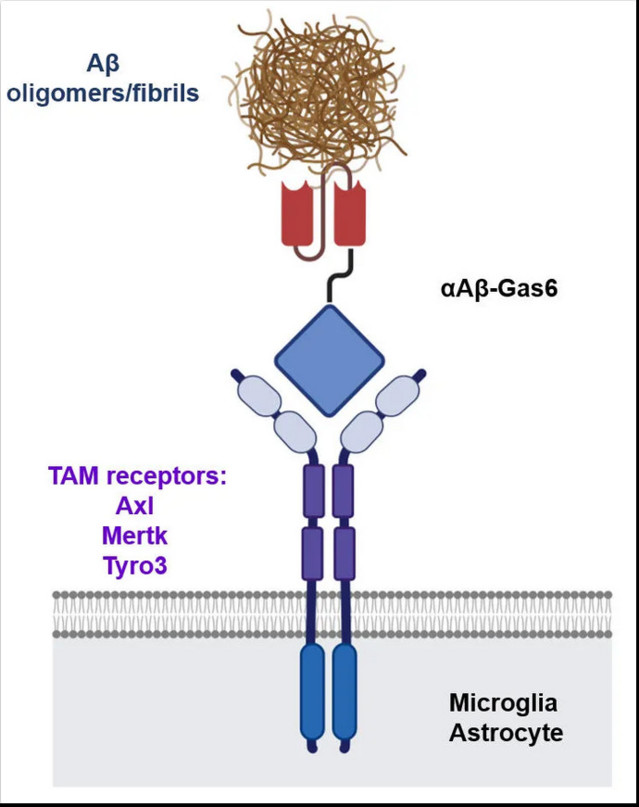
Schematic of a chimeric Gas6 fusion protein. A single chain variable fragment (scFv) of an Amy-loid β (Aβ)-targeting monoclonal antibody is fused with a truncated receptor binding domain of Gas6, a bridging molecule for the clearance of dead cells via TAM (TYRO3, AXL, and MERTK) receptors, which are expressed by microglia and astrocytes. Credit: Gliabiology Lab & Kim Lab of Immunotherapy
These inflammatory side effects have the potential to worsen cognitive impairment in Alzheimer’s disease patients by causing neuronal cell death and synapse elimination by activated microglia. As a result of its inflammatory side effects, current Aβ antibody-based immunotherapy has the risk of inflicting more damage than good.
To address these issues, a team of researchers at the Korea Advanced Institute of Science and Technology (KAIST) in South Korea created Aβ-Gas6,a new fusion pro-tein drug that successfully eliminates Aβ through a completely different mechanism than Aβ antibody-based immunotherapy. In a mouse model of Alzheimer’s disease, A-Gas6 not only eliminated Aβ more effectively, but it also avoided the neurotoxic inflammatory side effects associated with conventional antibody treatments.
The findings were recently published in the journal Nature Medicine.

The resulting αAβ-Gas6 clears Aβ oligomers and fibrils without causing neurotoxicity (a-b, neurons: red, and fragmented axons: yellow) and proinflammatory responses (c, TNF release), which are conversely exacerbated by the treatment of an Aβ-targeting monoclonal antibody (Aducanumab). Credit: Gliabiology Lab & Kim Lab of Immunotherapy
“FcR activation by Aβ targeting antibodies induces microglia-mediated Aβ phagocytosis, but it also produces inflammatory signals, inevitably damaging brain tissues,” said paper authors Chan Hyuk Kim and Won-Suk Chung, associate professors in the Department of Biological Sciences at KAIST.
“Therefore, we utilized efferocytosis, a cellular process by which dead cells are removed by phagocytes as an alternative pathway for the clearance of Aβ in the brain,” Prof.Kim and Chung said. “Efferocytosis is accompanied by anti-inflammatory responses to maintain tissue homeostasis. To exploit this process, we engineered Gas6, a soluble adaptor protein that mediates efferocytosis via TAM phagocytic re-ceptors in such a way that its target specificity was redirected from dead cells to Aβ plaques.”

The number and total area of Aβ plaques (Thioflavin-T, green) were significantly reduced in αAβ-Gas6-treated AD mouse brains compared to Aducanumab-treated ones (a, b). The cognitive functions of AD model mice were significantly rescued by αAβ-Gas6 treatment, whereas Aduca-numab-treated AD mice showed a partial rescue in these cognitive tests (c-e). Credit: Gliabiology Lab & Kim Lab of Immunotherapy
The professors and their team demonstrated that the resulting αAβ-Gas6 induced Aβ engulfment by activating not only microglial but also astrocytic phagocytosis since TAM phagocytic receptors are highly expressed by these two major phago-cytes in the brain. Importantly, αAβ-Gas6 promoted the robust uptake of Aβ without showing any signs of inflammation and neurotoxicity,which contrasts sharply with the treatment using an Aβ monoclonal antibody. Moreover, they showed that αAβ-Gas6 substantially reduced excessive synapse elimination by microglia, consequently leading to better behavioral rescues in AD model mice.
“By using a mouse model of cerebral amyloid angiopathy (CAA), a cerebrovascular disorder caused by the deposition of Aβ within the walls of the brain’s blood vessels, we also showed that the intrathecal administration of Gas6 fusion protein signifi-cantly eliminated cerebrovascular amyloids, along with a reduction of microhemor-rhages. These data demonstrate that aAb-Gas6 is a potent therapeutic agent in eliminating Aβ without exacerbating CAA-related microhemorrhages.”
Professors Kim and Chung noted, “We believe our approach can be a breakthrough in treating AD without causing inflammatory side effects and synapse loss. Our ap-proach holds promise as a novel therapeutic platform that is applicable to more than AD. By modifying the target-specificity of the fusion protein, the Gas6-fusion protein can be applied to various neurological disorders as well as autoimmune diseases affected by toxic molecules that should be removed without causing inflammatory responses.”
Reference: “Anti-inflammatory clearance of amyloid-β by a chimeric Gas6 fusion pro-tein” by Hyuncheol Jung,Se Young Lee,Seongjoon Lim,Hyeong Ryeol Choi,Yeseong Choi, Minjin Kim, Segi Kim, Yujean Lee, Kyung Ho Han, Won-Suk Chung, and Chan Hyuk Kim, 4 August 2022, Nature Medicine.
DOI: 10.1038/s41591-022-01926-9
Professors Kim and Chung founded “Illimis Therapeutics” based on this strategy of designing chimeric Gas6 fusion proteins that would remove toxic aggregates from the nervous system. Through this company, they are planning to further develop various Gas6-fusion proteins not only for Ab but also for Tau to treat AD symptoms.
This study was funded by the Korea Health Industry Development Institute,the Korea Dementia Research Center, the Korean Ministry of Health and Welfare, and the Korean Ministry of Science and ICT.
***
Alzheimer saattaa olla microglia-solujen häiriö hävittää b-amyloidi- ym. plakkia
https://scitechdaily.com/gene-signature-discovered-for-plaque-eating-microglia-in-alzheimers-disease/
" Gene Signature Discovered for Plaque-Eating Microglia in Alzheimer’s Disease
TOPICS: Alzheimer'sCell BiologyDuke-NUS Medical SchoolGenetics
By Duke-NUS Medical School May 21, 2021

Confocal microscopic image of microglia (green) engulfing amyloid plaques (blue). Credit: Duke-NUS Medical School
Alzheimer’s Disease is the most common form of dementia and is characterized by the build-up of amyloid plaques in the brain. Microglia, the immune sentinels of the brain, are not only responsible for eliminating foreign invaders, but also maintaining brain homeostasis by clearing toxic waste such as the amyloid plaques.
However, the role of microglia in Alzheimer’s Disease and its relationship to amyloid plaque accumulation remain unclear. Now,a team of scientists from Duke-NUS Medi- cal School and Monash University have found the gene expression signatures un-derlying microglia associated with amyloid plaque phagocytosis - i.e. the engulfing of deposits of the amyloid beta (Aβ) protein in the brain. The findings, reported in the journal Nature Communications, offer a new target for interventions that aim to address the underlying disease mechanism of this incurable disease.
To investigate the differences between healthy brains and those of patients with Alzheimer’s Disease at the single-cell resolution, the team of scientists at Duke-NUS and Monash embarked on an ambitious project to comprehensively study gene expression changes in specific human brain cell types that are associated with progression of Alzheimer’s disease. From that study, which was published in Nature Neuroscience in 2019, the team have honed in on microglia.
“We sought to understand the molecular mechanisms and differences between mic-roglia that were actively engulfing amyloid plaques in Alzheimer’s disease and those that weren’t,” said Associate Professor Enrico Petretto from Duke-NUS’s Cardiovas-cular and Metabolic Disorders Programme, a co-senior author of the study.
The team did this by using a stain, called methoxy-XO4, that specifically targets mic-roglia that have engulfed amyloid plaques. They used the stain in preclinical models of Alzheimer’s disease and then examined gene expression in the stained microglia. They investigated differences in gene expression underlying microglia’s ability to ingest particles (e.g. amyloid plaque) and identified associated regulatory molecules.
“Understanding this mechanism is important because now we have several new targets to go after, and in the future, these targets may open a new front against this devastating disease,” said Professor Jose M. Polo from the Monash Biomedicine Discovery Institute, a co-senior author of the study.
The studies revealed that for microglia that have not taken up amyloid,their gene expression patterns are most similar to aged microglia, which are known to be dys-functional and a major player in Alzheimer’s Disease pathogenesis. In addition, after microglia engulfed the amyloid plaques associated with Alzheimer’s Disease, they develop a characteristic gene expression pattern or signature. This change in gene expression is induced,in part, by a gene called Hif1a. The changed gene expression increases the ability of microglia to take up proteins such as amyloid, while reducing Hif1a does the reverse, highlighting the importance of Hif1a in controlling this micro-glia function. This regulatory role of Hif1a might also apply to the microglia function of removing damaged synapses.
“It is possible that this process is initially protective,” said Assoc Prof Petretto, “with the microglia effectively pruning damaged synapses located near plaques.” The scientists suspect, however, that this pruning process later goes awry as the disease progresses.
The team also used computational models to predict the networks of molecules involved in microglia uptake of proteins and identified potential targets to study for drug development. The widely used immunosuppressant drug rapamycin, for example, was found to block the gene Hif1a from triggering microglia to engulf amyloid plaques.
“This relationship between Hif1a and cognitive decline in Alzheimer’s disease is yet to be comprehensively uncovered,” said PhD student Gabriel Chew, who is a co-first author of the paper. “Future work could focus on using gene editing tool CRISPR to test the impact of manipulating Hif1a on symptom severity and disease progression.”
Reference: “Transcriptional signature in microglia associated with Aβ plaque phago-cytosis” by Alexandra Grubman, Xin Yi Choo, Gabriel Chew, John F. Ouyang, Guizhi Sun, Nathan P. Croft,Fernando J.Rossello,Rebecca Simmons,Sam Buckberry, Dulce Vargas Landin, Jahnvi Pflueger, Teresa H. Vandekolk, Zehra Abay, Yichen Zhou, Xiaodong Liu, Joseph Chen, Michael Larcombe, John M. Haynes, Catriona McLean, Sarah Williams, Siew Yeen Chai, Trevor Wilson, Ryan Lister, Colin W. Pouton, Anthony W. Purcell, Owen J. L. Rackham, Enrico Petretto and Jose M. Polo, 21 May 2021, Nature Communications.
DOI: 10.1038/s41467-021-23111-1
https://scitechdaily.com/new-antibody-demonstrates-therapeutic-benefits-against-alzheimers/
https://scitechdaily.com/flu-vaccination-linked-to-40-lower-risk-of-alzheimers-disease/
https://scitechdaily.com/viagra-is-promising-drug-candidate-to-help-prevent-and-treat-alzheimers-disease/
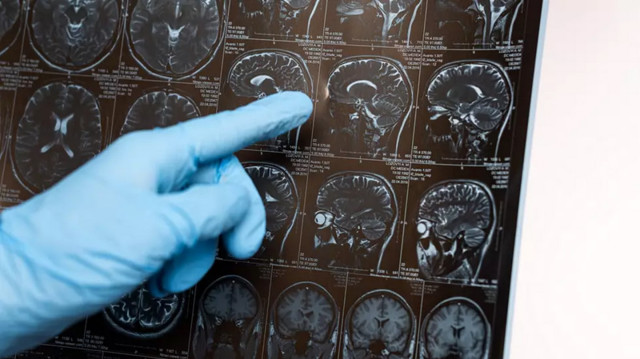
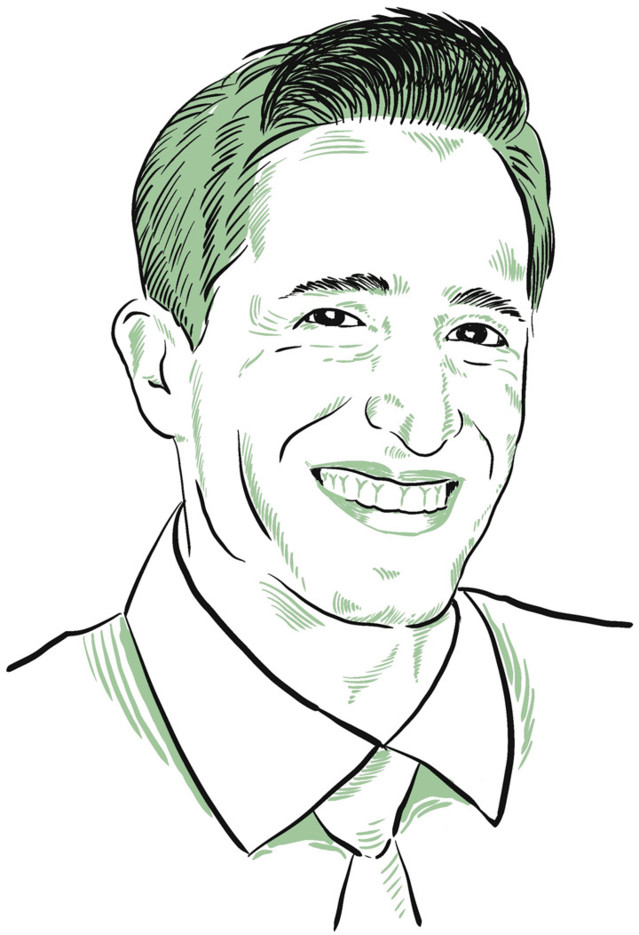


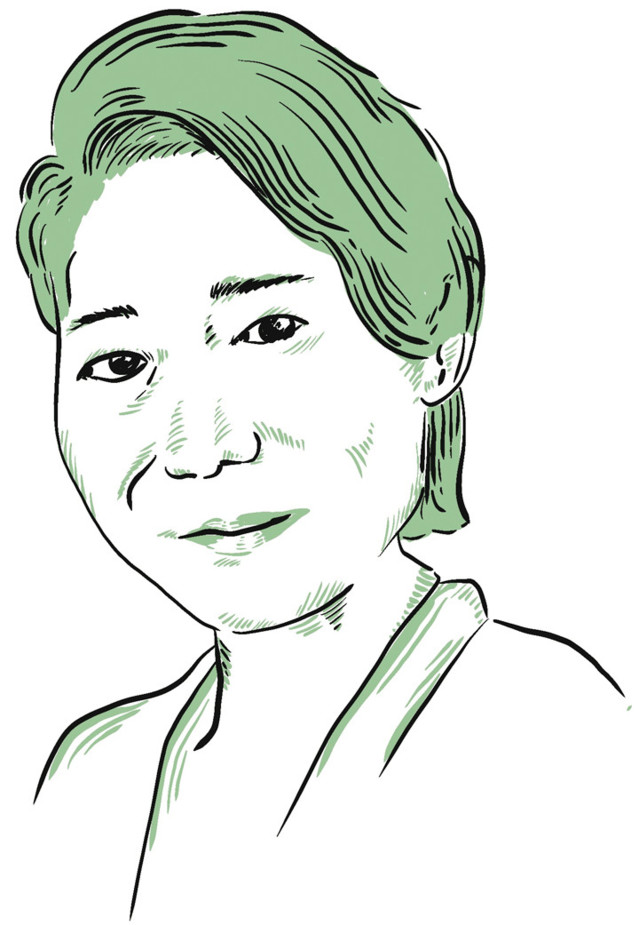








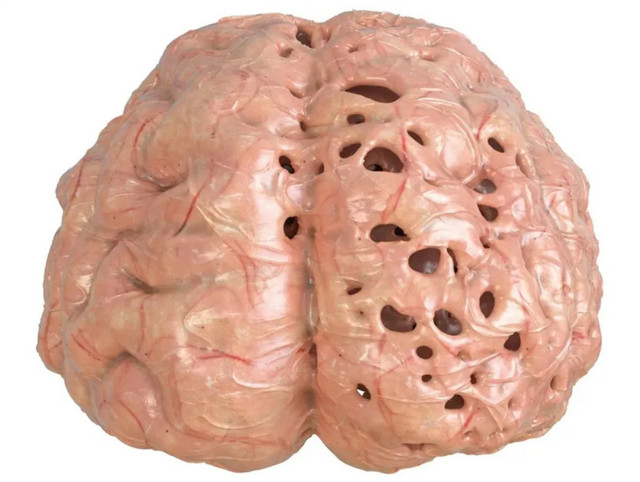



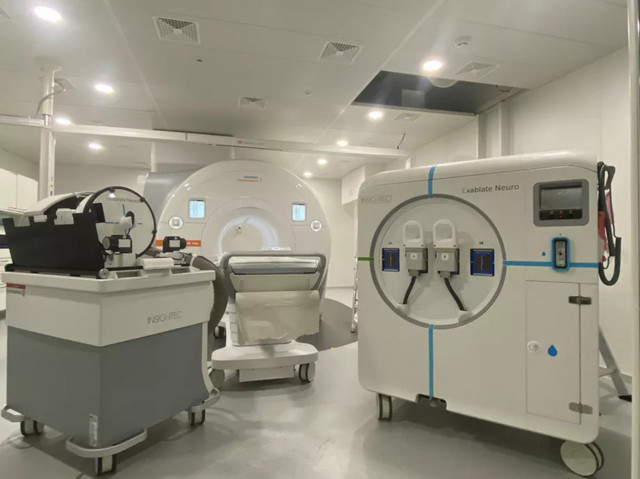
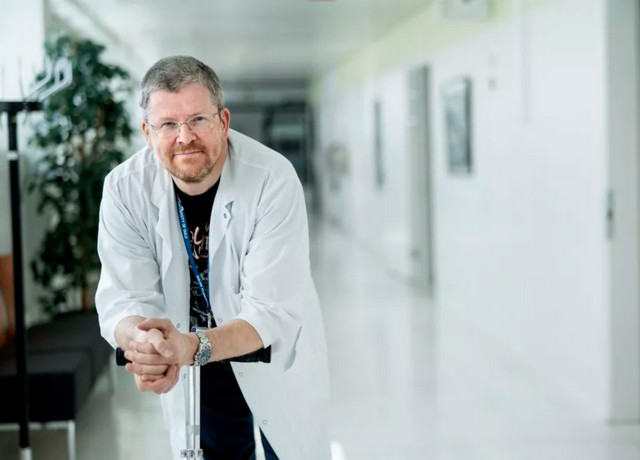
Kommentit